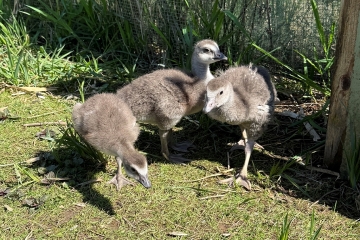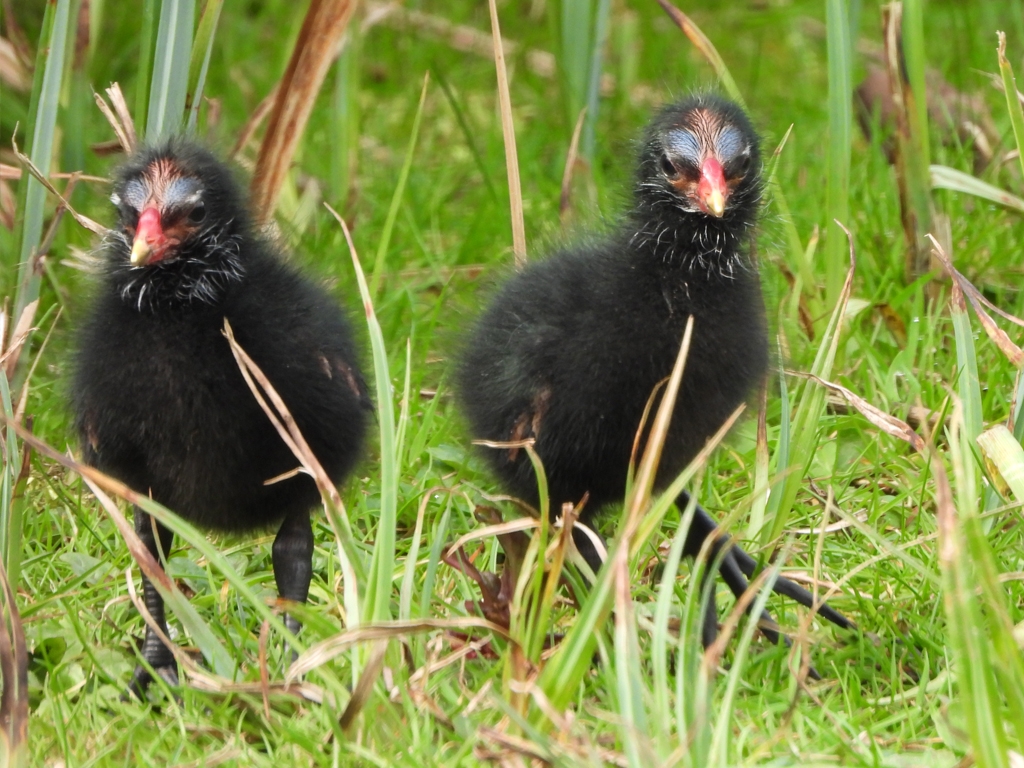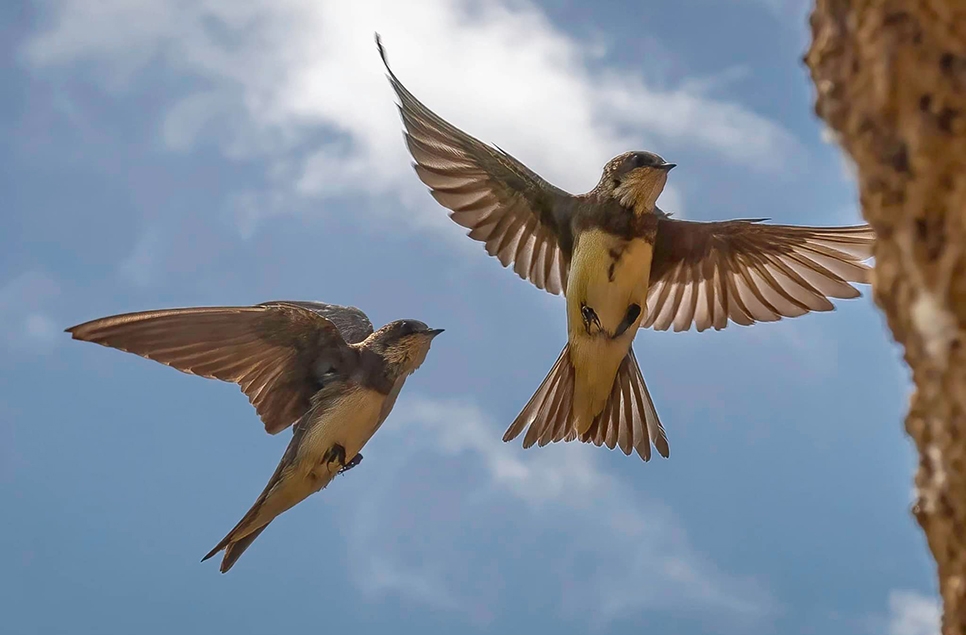Breeding season wrap-up for WWT Arundel collection
Our 2024 breeding season for our collection birds is now finished for the year. We were able to use our new Incubation & Rearing Room this summer. Visitors could see some eggs in the Incubators and even see some start to hatch! You may have seen some ducklings in the tanks visible through the large Rearing Room window.
The breeding season began in March and is finished now – but we sometimes get little surprises. Here is a rundown of the goslings and ducklings we welcomed this year, by the dates they hatched out.
Nene geese
Nene geese, or Hawaiian geese, have the earliest breeding season of all the birds in our living collection at WWT Arundel. These long lost relatives of Canada geese are the first species that our founder Sir Peter Scott helped save from extinction.
On 23rd of March our only nene gosling of 2024 hatched. The Keepers named him Cooper, in line with our recent tradition of naming the nene goslings with names beginning with “C” - like last year's Charlie and the previous Casper. The family lived in a special fenced yard within their Reed Swamp exhibit with the large green shed lined with straw to stay in overnight.
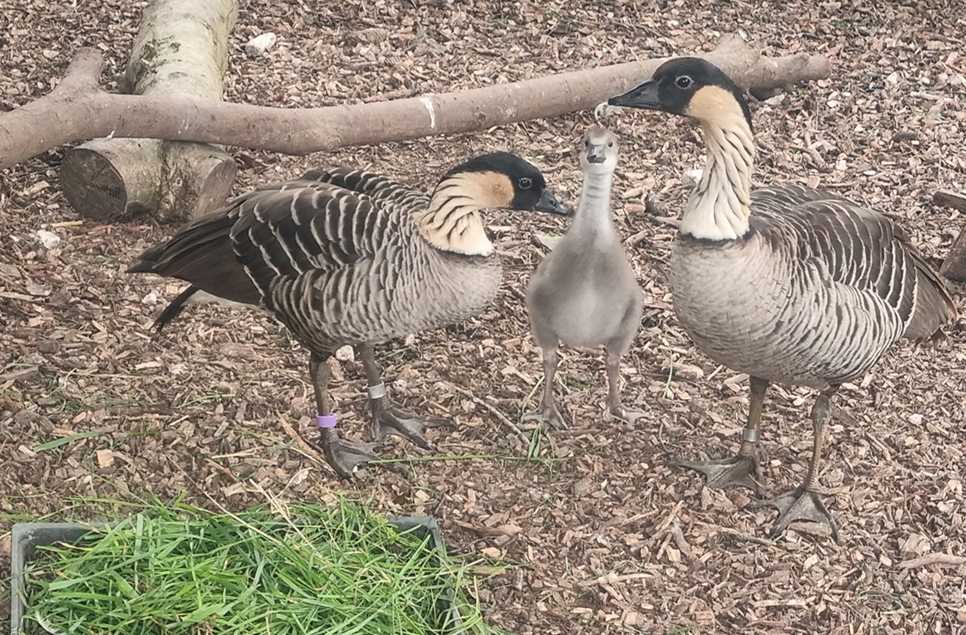
East Indian Wandering Whistling ducks
A female East Indian Wandering Whistling duck nested on eggs in our outdoor netted duckery.
On May 18th six ducklings hatched and both parents have raised them in the duckery. Like other young birds, the family is still in the protected duckery until spring .
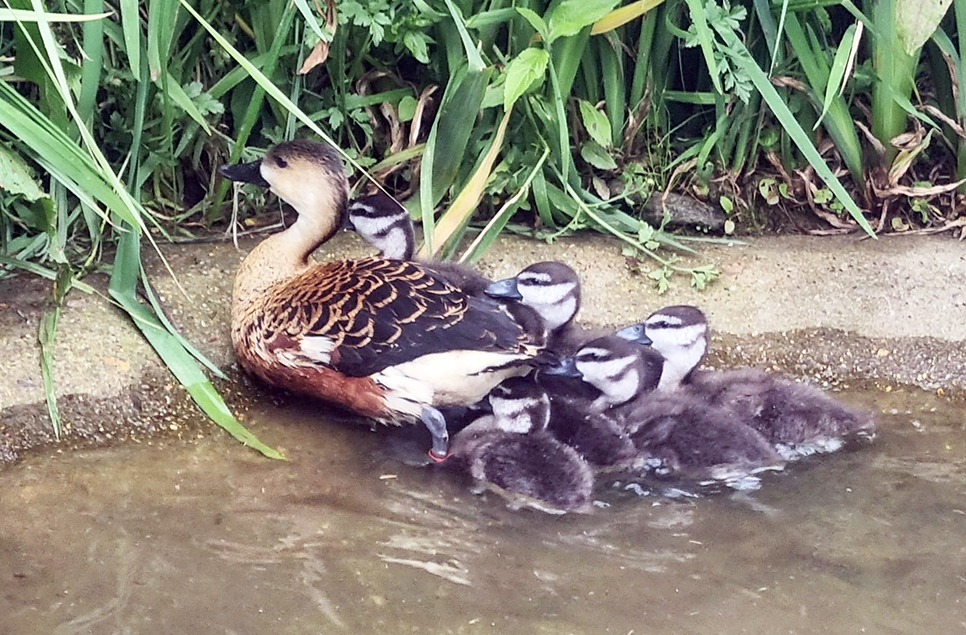
Hooded mergansers
We had two broods of hooded mergansers this season. Two hatched out on 22 May and all were hand reared.
Another three hooded mergansers hatched on the 11th of June. These three shared a rearing tank with a North American wood duckling and a bufflehead duckling (both also hatched 11 of June).
Its important that young birds are reared together for health and (duck) social skills - this sometimes gives us interesting groupings!
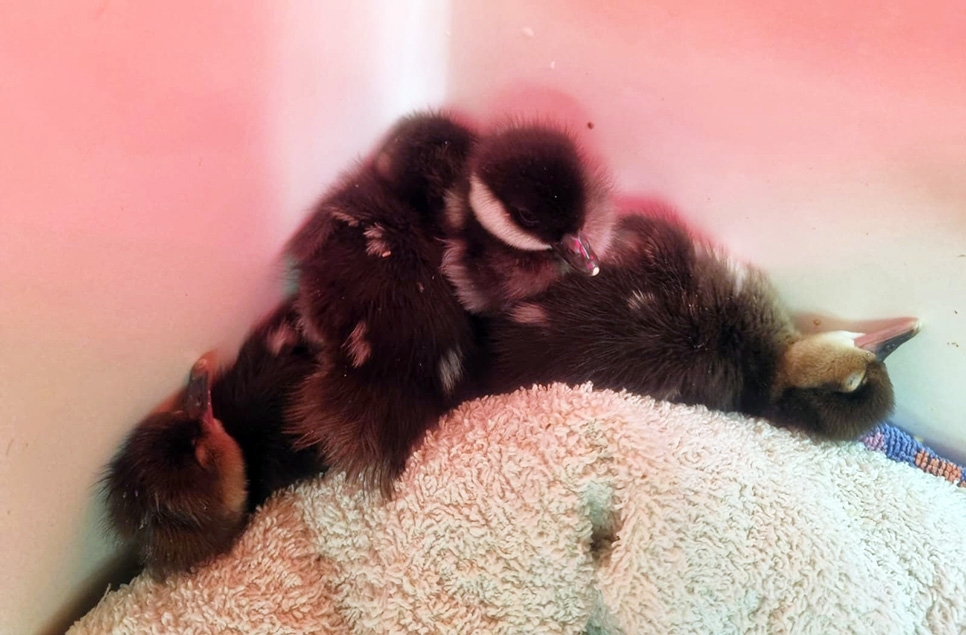
Australian wood ducks
Australian wood ducks are also known as maned geese. 'Dutton', 'John' and 'Rip' hatched out on 9 June. The three were raised in the rearing tanks and are now living in our outdoor duckery. Most young ducks will spend their first winter protected inside our netted duckery. In the spring the will be moved to other zoos, other WWT sites or released into our exhibits.
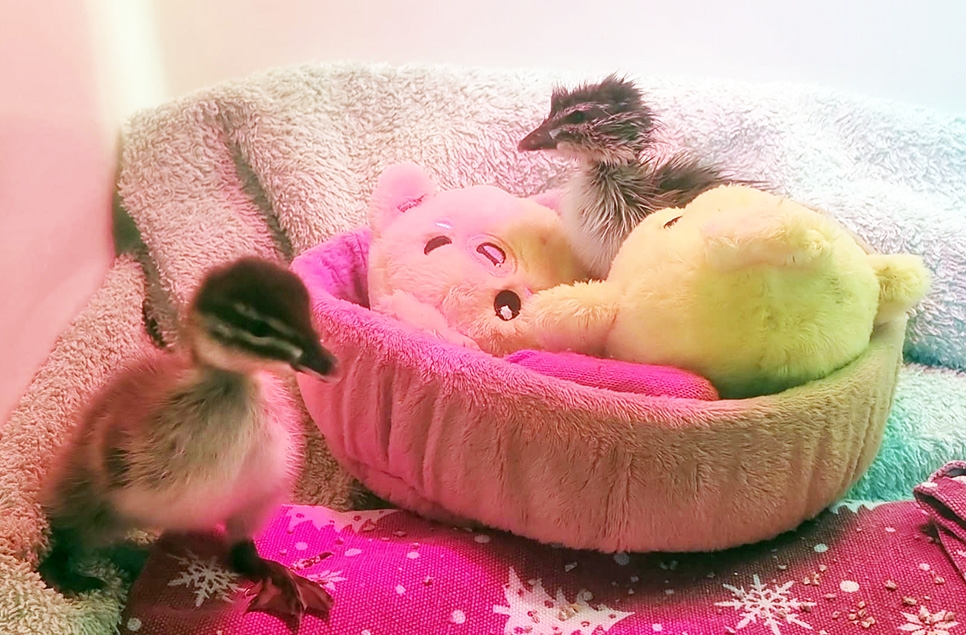
Common Scoter
Our first common scoter egg hatched this season! We welcomed Ludo on 26th of June, and named them after a character in the movie “Labyrinth”. We placed Ludo in with the Baikal teal female who was raising two of her two ducklings. She proved an excellent foster mum and doesn’t seem to notice that the baby scoter was MUCH larger than her two.
Ludo and the two young Baikal teal ducks can now be seen inside the Coastal Creek Aviary. Ludo is the only common scooter without a leg ring and is a bit of a show-off at our Diving Duck Feed at noon each day.
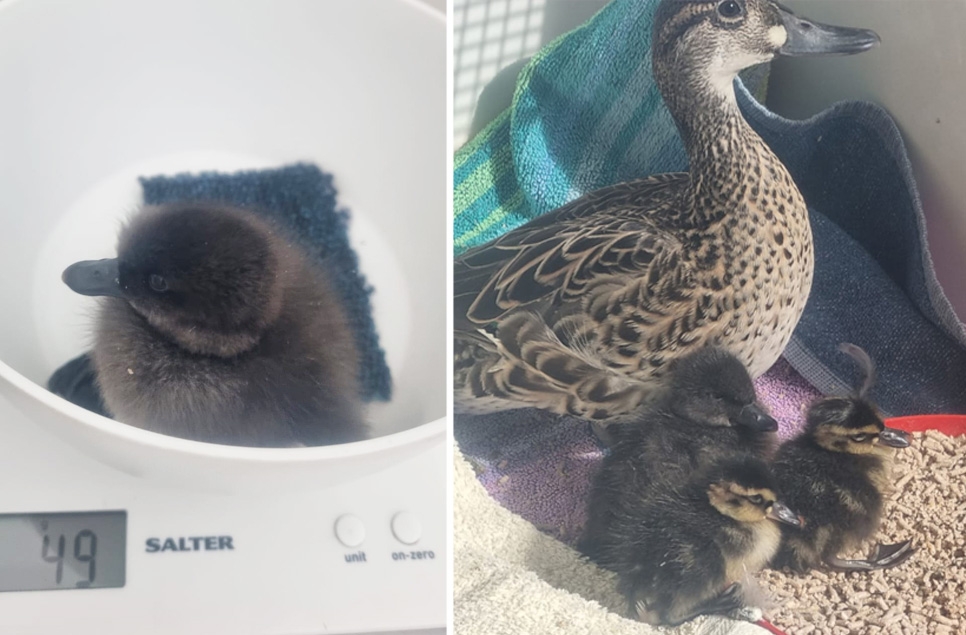
Scaly sided mergansers
Our collection team at WWT Arundel were focusing on other key species this year so were not going to raise any scaly-sided merganser ducklings. HOWEVER - One female cleverly hid a small clutch of eggs away, which we discovered as they neared their time to hatch. Three ducklings hatched out on July 5th.
We decided to let this female scaly-sided merganser rear her own ducklings outdoors, but in the safety of our duckery, with our keepers keeping a close eye on the family. All fared well and the merganser family are now on show in one side of our waterfalls exhibit near the Incubation and Rearing Room building. These are the first parent reared scaly-sided mergansers among all European Zoos!
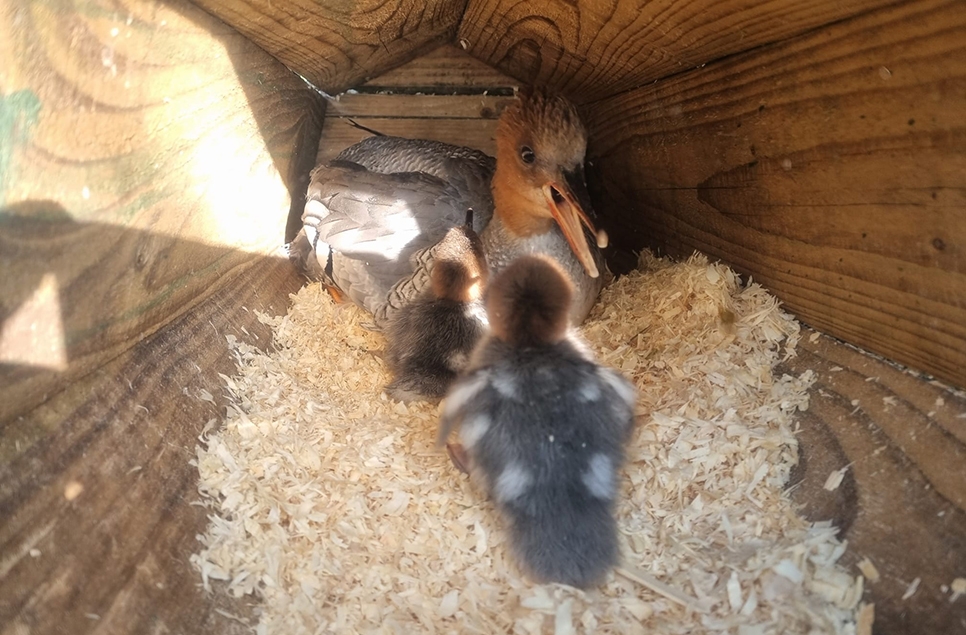
North American Wood Ducks & Buffleheads
Also on July 5th we had four North American wood ducklings hatch. They are also known as Carolina wood ducks and look like beautifully painted ducks when they are adults. These four shared a tank with two bufflehead ducklings that hatched the same day.
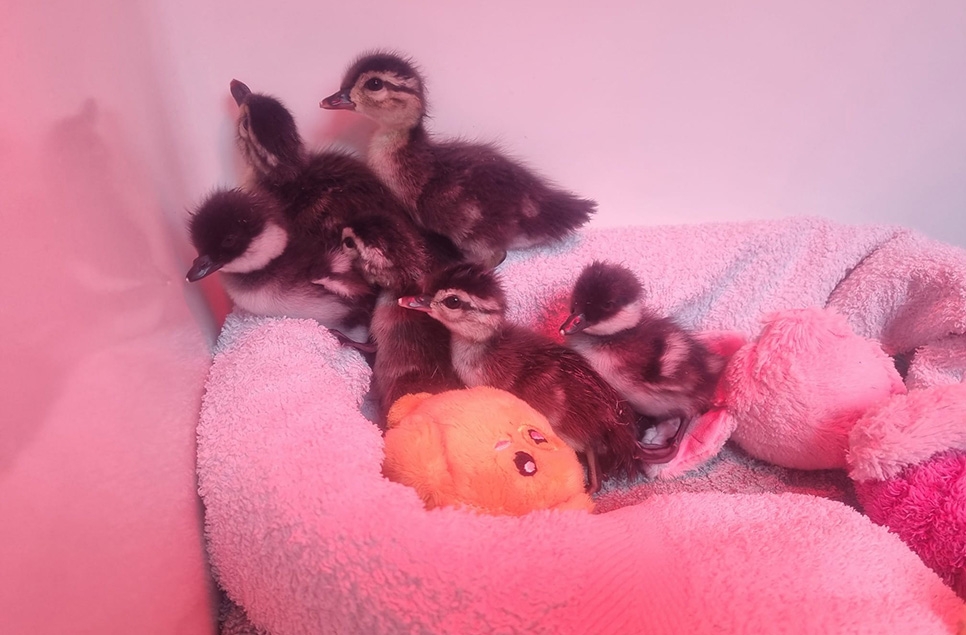
Javan & Ring-necked ducklings
One Javan duckling hatched from an egg in our incubators on July 10th. A ring-necked duckling also hatched in the Incubation room on July 23rd. These species are both first time hatches at WWT Arundel!
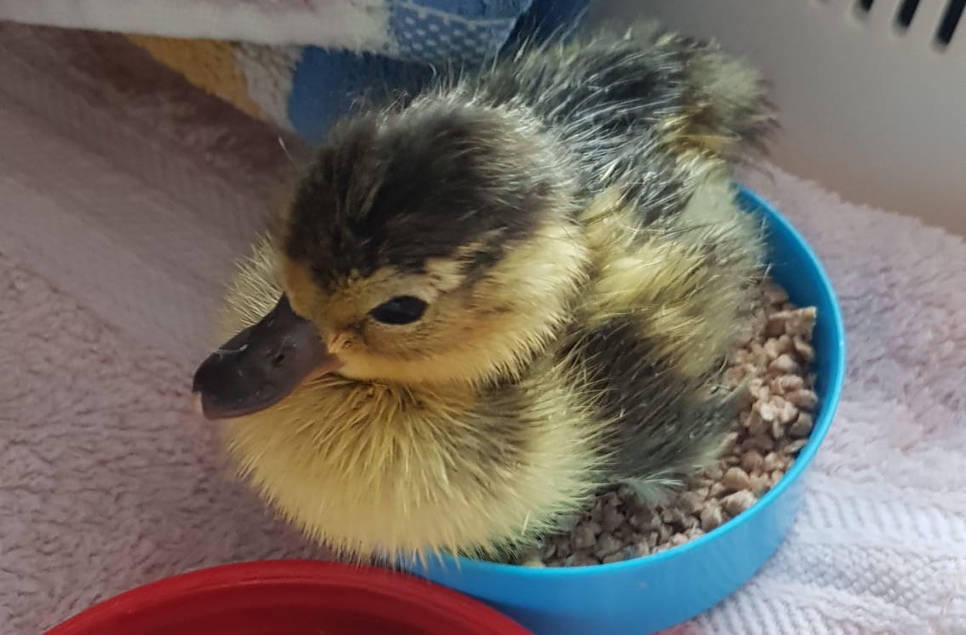
Blue Billed Teal
Our last ducklings to hatch of the summer where 3 blue-billed teal ducklings. They hatched in the incubator in the Incubation Room on August 15th. These three ducklings are still in a tank and can be seen through the window into the rearing room in the Incubation & Rearing Room building. They will be moved to the outdoor duckery when they are fully-feathered as it is much cooler out as Autumn rolls in.
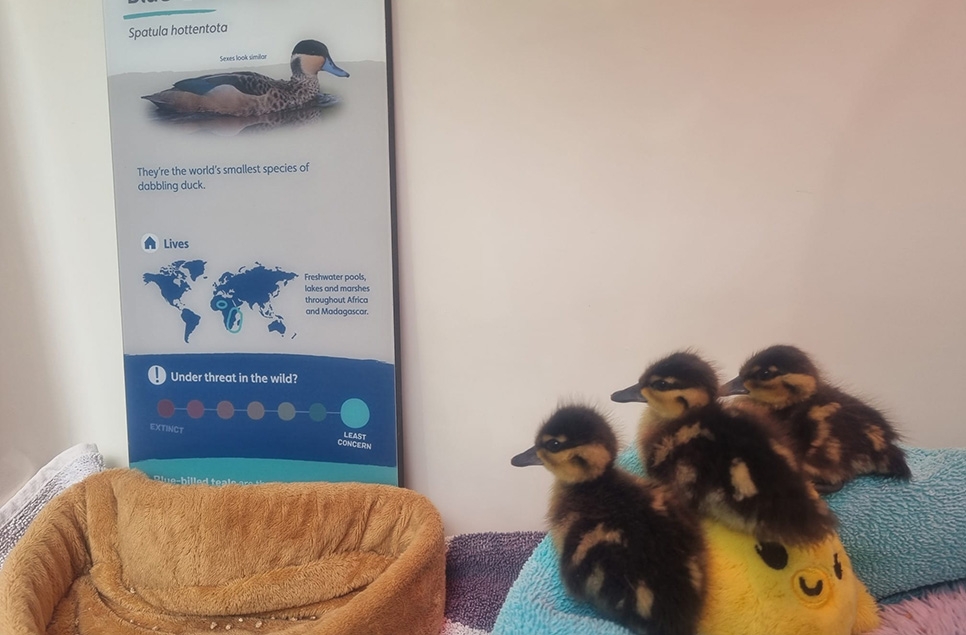
All this seasons youngsters will remain in netted aviaries until next year, as soon as the weather gets warm enough to move them.
Some of the birds that hatch out this season at Arundel Wetland Centre may remain here while others may be moved to other WWT centres and zoos across the UK. Endangered species belonging to the EEP programme may even end up abroad in other countries as part of conservation programs.
Ready to visit?
If you've been inspired to explore Arundel Wetland Centre, find out more and plan your visit online.
Plan your visit
Ready to visit?
If you've been inspired to explore Arundel Wetland Centre, find out more and plan your visit online.
Plan your visit